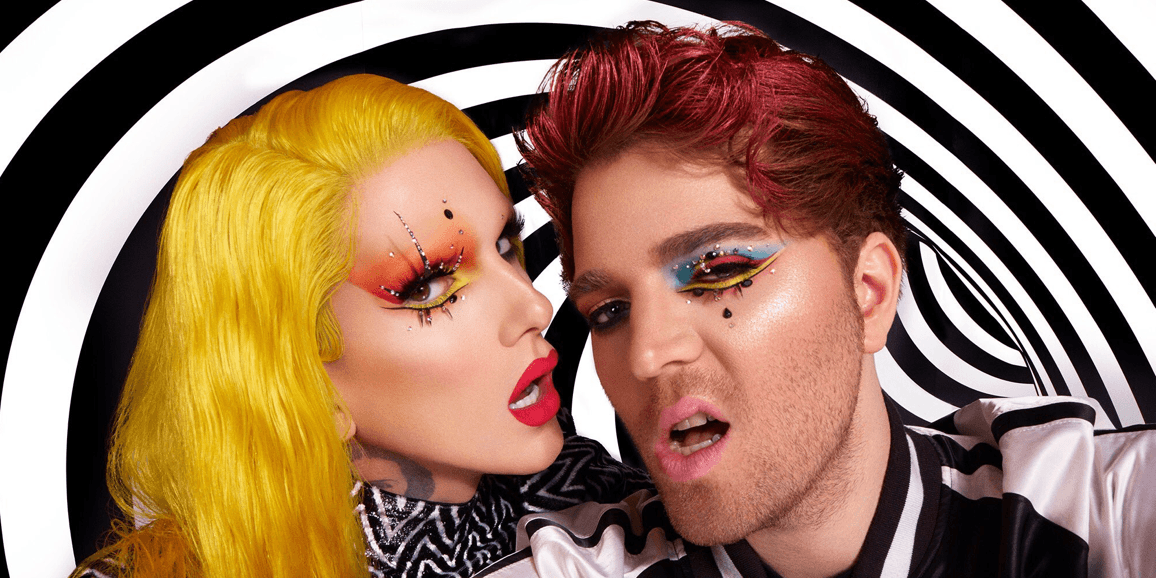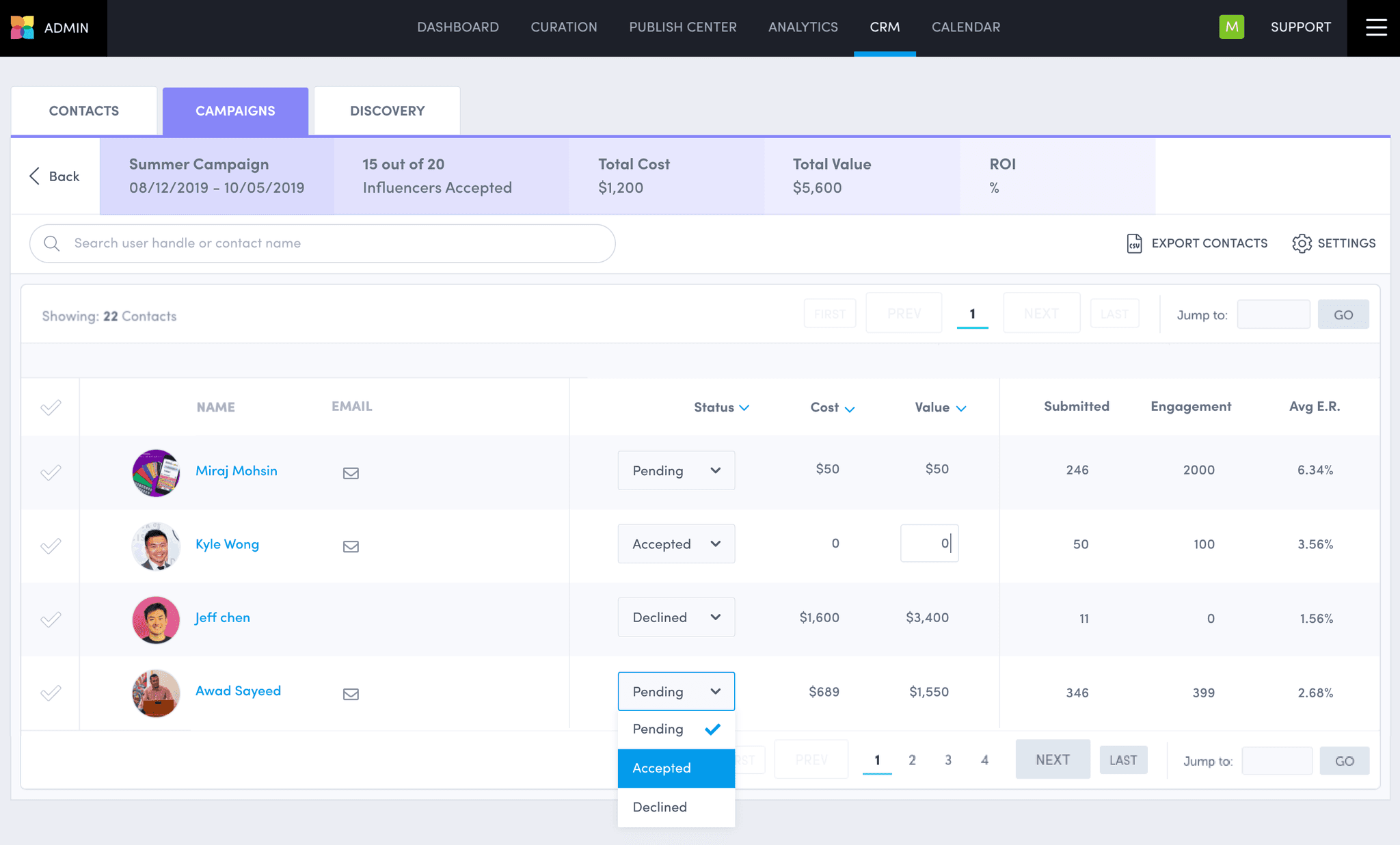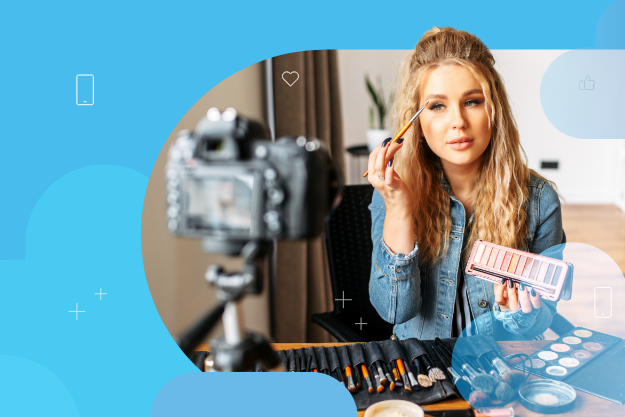We now live in a world where FOMO (fear of missing out) has taken over retail. From streetwear “hype beasts” to TikTokers selling out a brand’s limited-edition products within minutes, consumers want what they can’t have and are willing to pay a pretty penny for it. A marketing report from SocialPubli.com showed that 93% of marketers are using influencer marketing. Once thought of as only a trend, influencer marketing is becoming a very profitable marketing tactic. Whether you're new to influencer marketing or have attempted it in the past, these five tips will set you up for success for your next influencer campaign.
1. Find the right influencer and platform
Researching influencers before choosing one to work with can save brands a lot of time. Once a brand has decided on what type of campaign they want to run, the immediate criteria brands should be looking for are authenticity, consistency, reach, and engagement. But some of the most important criteria when working with influencers – whether they are macro or micro – are making sure those influencers will not only align with the brand’s core values, but that they are also relevant to your brand, industry, and audience.
Brands want to also make sure that they are selecting influencers whose content will be dynamic and able to be used throughout multiple marketing initiatives. Customers like seeing “social proof” and having just one singular post can look inauthentic or too much like an advertisement and that can make it seem as if you are not in touch with your audience.
And lastly, marketers want to make sure that they are utilizing the right platform for the right target audience. TikTok has become exceptionally useful for Gen Z, whereas Instagram and YouTube retain Millennials well. If a brand’s target audience engages more with TikTok and they are advertising on Facebook, the content most likely will not have a strong reach, high engagement, or clicks to bring the customer to your website.
PRO TIP: Allow influencers to have some input on the campaign and creative is a good decision because influencers (especially micro-influencers) know what their followers like to see content-wise, what they respond best to, and how to engage with them for maximum results.
2. Employ scarcity marketing tactics
One of the most successful techniques brands can utilize when collaborating with an influencer is scarcity marketing. Scarcity marketing is a marketing technique based on the principle that people seek what is in limited supply. Working alongside an influencer for a campaign can help brands create buzz or hype around a product they want to promote or create together. A few things to keep in mind or try when using scarcity marketing:
Limit the amount of the product being sold so it remains exclusive. This will not only help increase buzz for your brand, but it will also create demand for that product.
Lower the barrier to entry: offer free shipping or free 2-day shipping.
Only release the product for a certain number of days to make it truly exclusive.
When Morphe Cosmetics was able to offer the Jeffree Star x Shane Dawson Conspiracy palette, the limited number of palettes sold out quickly. The social media marketing tactics used throughout Jeffree Star’s YouTube, Snapchat, and Instagram created such demand for their palette, that it broke Morphe's website on the launch day.

Jeffree Starr released a palette with Shane Dawson through Morphe – so successfully, they broke the site's eCommerce engine.
3. Embrace micro-influencers
When thinking about influencer marketing tactics don’t count out the micro-influencers. At the micro-level, there’s higher engagement, lower costs, and significant room for growth opportunities. Influencers with 1,000-5,000 followers have a 6.3% engagement rate, whereas influencers with over 10,000 have just 3.6%. Utilizing micro-influencers is one of the largest influencer marketing trends because you can stretch your budget as well as having customers see that you are working with an “average person”. The best part about micro-influencers is that the engagement is REAL. Even some macro-influencers seem to have questionable followers that could be bots.
If your budget does not allow for larger campaigns with macro-influencers, micro-influencers are a great way to stretch out your budget because you can gift multiple influencers products or allow them to be brand ambassadors. Micro-influencers want to represent brands they already trust, so gifting them is a great way to help them post UGC that is carefully curated and that you can use throughout marketing initiatives.
4. Use an influencer management tool
One thing that is very important for influencer collaborations is staying organized. Having an influencer management tool like Pixlee [now Emplifi] offers can help brands manage contracts, content, gifts being sent out, cost/budget, and analytics will make any marketer's job easier. Determining direct ROI, and analytics from each influencer campaign will show you what is working for your target audience and what isn’t. These tools can also help you find new influencers that you can work with for future campaigns.

Pixlee's influencer CRM streamlines influencer discovery, analytics, and management.
5. Maintain influencer relationships beyond the campaign
Another thing to keep in mind when doing influencer collaborations is maintaining that relationship after the campaign is complete – especially when working with macro-influencers. Nurturing that relationship can be so vital to a brand because it helps keep the option open to work together for future opportunities as well as solidifying a brand advocate for life.
Meaningful actions like sending flowers on their birthday or if gifting an item, also sending something for their significant other or pet. Going that extra mile to add a personal touch is like influencer gold - they are always going to remember that gesture, make sure their followers see that thoughtfulness, and that will carry into their purchasing decisions. Treating them like a trusted partner is key to success going forward. Influencer marketing is changing not only the way that marketers are thinking but how consumers purchase products and relate to brands. With these five strategies, brands will be able to reach their goals for campaigns and also foster relationships with different influencers. This long-time relationship can open up opportunities for licensing deals, product collaborations, or even event appearances. As influencer marketing evolves, marketing strategies need to evolve as well to adapt to this new customer journey.



































